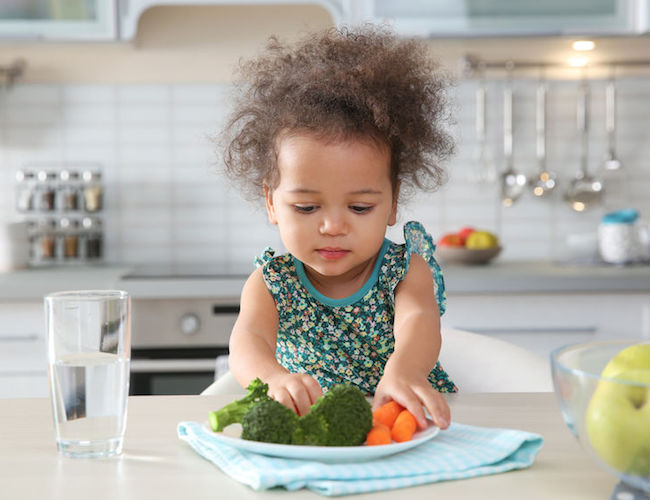An apple a day: How to encourage healthy eating habits in your toddler
What exactly is a healthy, balanced eating plan for a toddler and how can you, as a parent or carer, lay down good nutritional habits for life?
If you’re one of those parents who can get your child to eat almost anything, from calamari to aubergine, by disguising it cleverly as a favourite shape on the plate, you’re probably in the minority.
Most of us deal with the daily limitations of the toddler palate – your little one wants to eat only what they are familiar with, day in day out, and if there’s something healthy they manage to get into, it’ll probably be endless punnets of fresh strawberries, seedless grapes or kilograms of ostrich biltong, for example – none of which come cheap.
What do toddlers need to eat in a day?
Toddlers need three meals plus two or three snacks each day, as well as six to eight drinks, according to registered dietitian and public health nutritionist Dr Frankie Phillips.
According to Dr Phillips, toddlers manage their appetites particularly well by gobbling up everything in sight some days, and on others not being much interested in food.
Also, because their tummies are so small, portion sizes should ideally be little (“about the size of their cupped hand”); adding that splitting meals into two parts (the second could be a yoghurt ot fruit, for example) can help you get a bit more nutrition into them on the days they’re not much interested in food.
How do you create a balanced meal for your toddler?
Your toddler needs to consume a variety of foods at each meal, with snacks being there to fill in the gaps. Clinical paediatric dietitian, Kath Megaw, of the Nutripaeds practice, does not believe that kids of this age need to take in all the food groups in one meal.
In fact, she says the research shows that it’s more likely for them to receive their requirements from all the food groups over the course of the day; or even the week. When it comes to carbohydrates, try to steer them towards oats and brown rice, she says; for the proteins, try lean chicken or meat, fish and eggs.
How to make toddler mealtimes a little easier
Just remember that toddlers have a very low attention span and limited time for eating, as they have so many other important things to get to like playing and running around. Protein foods that take a long time to chew are often rejected – so minced proteins like meatballs or soft proteins like fish are often better received.
Give them as varied a range of fruit and vegetables as you can afford, and don’t stress if they only eat apples – or peas – for a while; and emphasise the importance of full-fat dairy products such as cheese and yoghurt, especially once weaned. Any missing vitamins and minerals can be taken in, in the form of a supplement especially made for kids, such as Gummy Vites (R95 to R180), available at Clicks.
Creating good eating habits through the fussy years
Additional tips on optimal nutrition during the fussy toddler years, advises Megaw, is to ensure your toddler has good food exposure.
This is a critical part of eating well, because out of sight often equates to out of mind.
“Although your toddler may binge on certain foods or decrease their variety, on occasion, it is still important to include variety within the home and within their sight. Exposure could take place in the following ways: food pictures in magazines, watching you prepare food, buying food with you, food play and, most importantly, smelling and watching you eat the foods you would want your toddler to eat,” she says.
Megaw adds that this approach really goes a long way towards ensuring positive food acceptance. “Remember that feeding is a journey, and you can create a positive experience for you and your toddler by keeping things simple, avoiding food battles and, if or when the wheels do come off, occasionally knowing to STOP, PAUSE (i.e. observe what is going on) and, only then, ENGAGE,” is Megaw’s advice.
IMAGE CREDIT: 123rf.com



